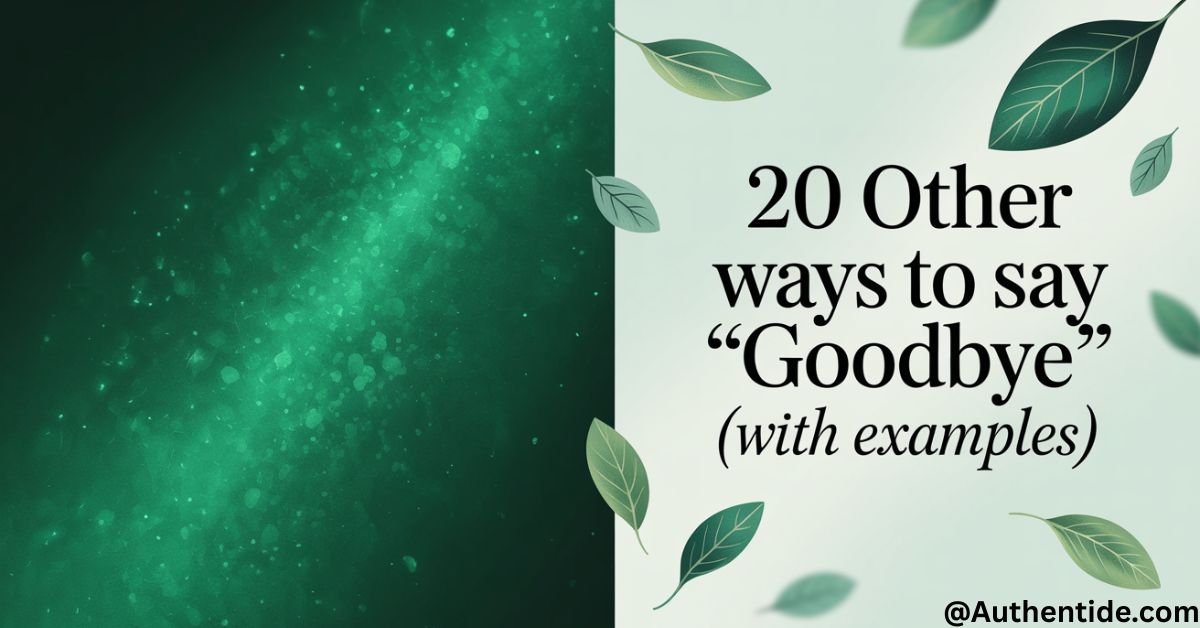Saying goodbye isn’t always just a simple parting it s an art form that can strengthen connections, leave lasting impressions, and set the tone for your next interaction. In our daily lives, we exchange countless farewells, yet most of us default to the same tired phrases that barely scratch the surface of our true sentiments. Whether you’re ending a business meeting, wrapping up a casual conversation with friends, or writing an email to a colleague, having a diverse repertoire of goodbye alternatives can transform ordinary partings into memorable moments of connection.
The beauty of farewell expressions lies in their ability to convey nuance. Like the subtle difference between a handshake and a hug, each goodbye phrase carries its own emotional weight and contextual appropriateness. From formal business settings to intimate friendships, the way you choose to end an interaction speaks volumes about your relationship with the other person and your communication style.
In today’s globalized world, where English fluency is increasingly essential, mastering these subtle variations can distinguish you as a thoughtful communicator. This collection of 20 different ways to say farewell is not just about avoiding repetition it is about expanding your expressive palette to match the rich variety of human relationships and situations you navigate daily. By the end of this article, I guarantee you’ll never look at “goodbye” the same way again.
What to Say Instead of “Goodbye”
- Until next time
- Take care
- Farewell
- See you soon
- I’ll be in touch
- Until then
- Have a wonderful day
- Catch you later
- Looking forward to our next conversation
- All the best
- Take it easy
- Be well
- Until we meet again
- Signing off
- Cheers
- Keep in touch
- Wishing you well
- So long
- Stay awesome
- Peace out
Why We Need Different Ways to Say Goodbye
We’ve all been there that awkward moment when you’ve already said “goodbye” once, but the conversation ending gets delayed, and you find yourself repeating the same word like a broken record. Having a variety of goodbye options at your disposal helps avoid these uncomfortable situations while also adding nuance to your partings.
Different relationships call for different farewells. The way you say goodbye to your boss should naturally differ from how you part ways with your best friend. Formal goodbyes convey respect and professionalism in business settings, while casual goodbyes reinforce the relaxed nature of personal relationships. Each context demands its own appropriate farewell message.
Moreover, your choice of goodbye expression can set expectations for future interactions. Phrases like “See you tomorrow” or “Until our next meeting” create clear expectations, while others like “Keep in touch” leave the door open without specific commitments. Being intentional about these choices helps manage relationships effectively.
20 Alternative Ways to Say Goodbye
Here are 20 Alternative Ways to Say Goodbye:
1. Until next time
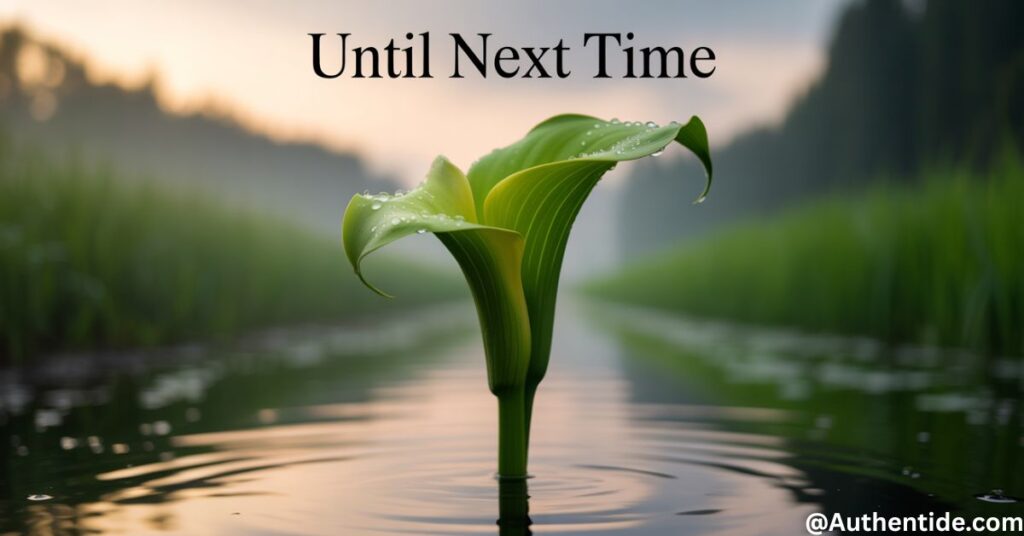
“Until next time” strikes the perfect balance between casual and thoughtful, suggesting that while this interaction is ending, there will definitely be another. It’s optimistic without being overly sentimental.
Example scenario (Email): “I’ve attached all the requested documents for the project. Until next time, I hope you have a productive week ahead!”
2. Take care
This warm farewell expresses genuine concern for the other person’s wellbeing, making it perfect for both personal and professional settings when you want to convey that you value someone beyond just your immediate interaction.
Example scenario (Phone call): “It was great catching up with you, Marcus. Take care, and let me know how your interview goes!”
3. Farewell
Though slightly more formal than everyday goodbyes, “farewell” carries a certain elegance that makes it appropriate for formal partings or situations with emotional significance.
Example scenario (Leaving job): “After five wonderful years with this team, I must bid you all farewell as I embark on this new chapter of my career.”
4. See you soon
This friendly goodbye creates a sense of continuity in relationships, suggesting that the separation is temporary and another meeting is already anticipated.
Example scenario (After coffee with a friend): “This was exactly what I needed today, Chelsea. See you soon for that movie we talked about!”
5. I’ll be in touch
When you want to maintain a connection but aren’t sure exactly when you’ll communicate next, this goodbye phrase keeps the door open while acknowledging that you value the relationship enough to initiate future contact.
Example scenario (Networking event): “It was fascinating hearing about your work in sustainable architecture. I’ll be in touch about those resources we discussed.”
6. Until then
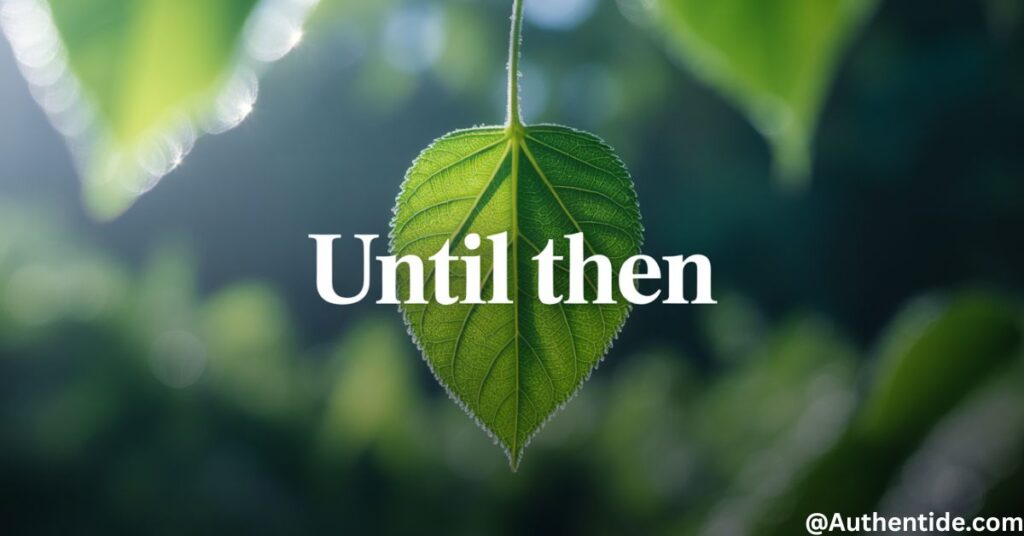
This elegant conclusion works wonderfully when you’ve already established a future meeting or touchpoint, creating a sense of anticipation rather than finality.
Example scenario (End of meeting): “I’ll review these proposals and have feedback by Friday. Until then, feel free to email me with any questions that arise.”
7. Have a wonderful day
This sendoff focuses on well-wishes for the immediate future, making it perfect for service interactions or brief professional exchanges where you want to leave a positive impression.
Example scenario (Customer service): “Your order has been processed and will ship tomorrow. Have a wonderful day, Mrs. Rodriguez!”
8. Catch you later
This ultra-casual goodbye alternative works best among close friends or in relaxed workplace cultures where formality isn’t expected or necessary.
Example scenario (Text message): “Can’t talk now, in a meeting. Catch you later for dinner at 7?”
9. Looking forward to our next conversation
When you genuinely enjoyed an interaction and want to communicate your enthusiasm for continuing the relationship, this thoughtful farewell message sets a positive tone.
Example scenario (After interview): “Thank you for taking the time to discuss this opportunity in such detail. Looking forward to our next conversation about the position.”
10. All the best
This versatile goodbye expression works in nearly any context and conveys genuine good wishes without being overly familiar or formal.
Example scenario (Email): “I’ve attached the contract for your review. All the best with the launch next month!”
11. Take it easy
This laid-back farewell suggests that the person might be dealing with stress or challenges, offering a gentle reminder to prioritize self-care—perfect for friends or colleagues who seem overwhelmed.
Example scenario (End of workday): “Don’t worry about those reports tonight, Jamal. Take it easy and we’ll tackle them together tomorrow.”
12. Be well

Both sincere and slightly formal, “be well” combines good wishes with a touch of elegance, making it appropriate for professional relationships where you want to express genuine care.
Example scenario (Doctor’s office): “Your test results should be ready by Tuesday. Be well, Mr. Chen, and call us if you experience any new symptoms.”
13. Until we meet again
This slightly poetic parting phrase adds a touch of significance to a goodbye, suggesting that your paths crossing again is something you genuinely look forward to.
Example scenario (End of conference): “It’s been enlightening hearing your perspectives on renewable energy. Until we meet again, I’ll be following your research with interest.”
14. Signing off
Borrowed from radio communications, this conversation ending works well in written communications or calls where you need a clear indication that you’re concluding your participation.
Example scenario (Work chat): “I’ve uploaded all the design files to the shared folder. Signing off for now, but feel free to tag me if you need clarification.”
15. Cheers
This British-inspired farewell has been adopted globally as a casual yet warm way to end interactions, carrying connotations of goodwill and positivity.
Example scenario (Email): “The tickets have been booked for Friday’s event. Cheers, Sophia.”
16. Keep in touch
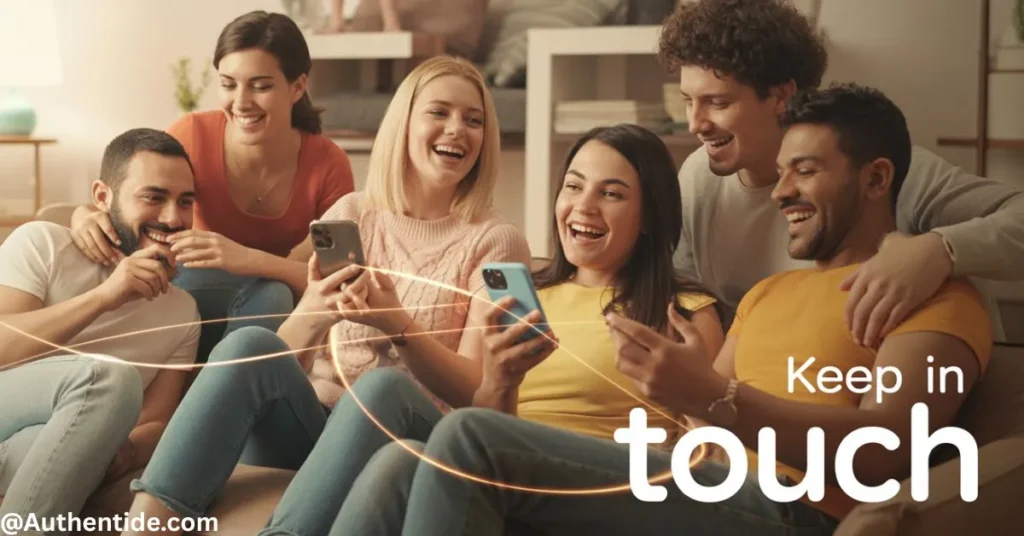
When you value a connection but circumstances might make regular contact difficult, this friendly goodbye expresses your desire to maintain the relationship despite potential gaps in communication.
Example scenario (Colleague leaving): “It’s been amazing working with you these past three years, Aisha. Keep in touch and let us know how the new job goes!”
17. Wishing you well
This formal goodbye works particularly well in writing when concluding communication with someone you may not see again soon but wish to leave with positive sentiments.
Example scenario (Follow-up email): “Thank you for considering our proposal. Wishing you well with your decision-making process.”
18. So long
With its slightly nostalgic tone, “so long” strikes a balance between casual and meaningful, making it perfect for saying goodbye to someone you’ve spent significant time with.
Example scenario (End of project): “It’s been an intense six months working together on this launch. So long for now—let’s celebrate properly next week!”
19. Stay awesome
This modern, enthusiastic farewell works well with friends or in casual work environments with a positive culture, expressing affirmation along with your goodbye.
Example scenario (Text message): “Gotta run to pick up the kids. Stay awesome and crush that presentation tomorrow!”
20. Peace out
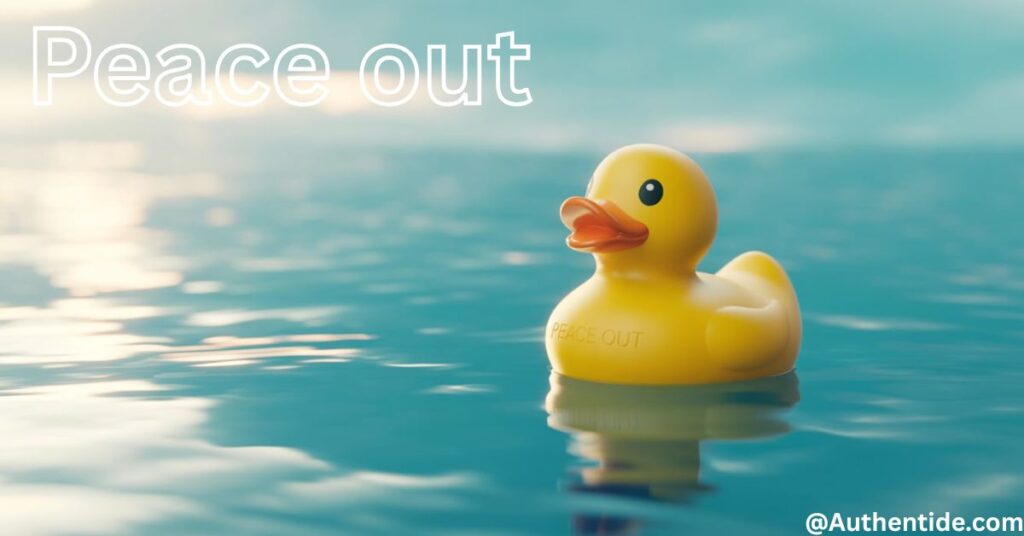
This relaxed, friendly signoff works best among close friends or in very casual environments, particularly with younger generations who appreciate authenticity over formality.
Example scenario (Group chat): “Heading to bed now. Peace out, everyone—see you at the game tomorrow!”
How to Choose the Right Goodbye for Each Situation
Selecting the appropriate farewell depends largely on context and relationship. For professional farewells in business settings, options like “Until next time,” “Looking forward to our next conversation,” or “All the best” strike the right balance of warmth and professionalism. These phrases maintain English fluency while avoiding the overly casual tone that might undermine your professional image.
For personal relationships, you have more flexibility. Casual goodbyes like “Catch you later,” “Peace out,” or “Stay awesome” reinforce the relaxed nature of friendships. The key is matching your farewell message to the overall tone of your relationship—using an overly formal goodbye with close friends might create unnecessary distance, while too casual a farewell in professional settings could appear disrespectful.
Cultural considerations also matter significantly when choosing how to say farewell. What’s appropriate in one culture might seem abrupt or overly familiar in another. When in doubt, observe how others in that cultural context conclude their interactions, and follow their lead until you’re confident in your understanding of local customs.
Pro Tips for Memorable Goodbyes
The most important paragraph in this entire article might be this one: The way you deliver your goodbye often matters more than the specific words you choose. Make eye contact, smile genuinely, and use the person’s name when possible. These small touches transform any goodbye phrase into a meaningful moment of connection. Remember that your body language and tone speak volumes—a warm “take care” with direct eye contact will always feel more sincere than an elaborate farewell delivered while distracted.
Don’t rush your farewells. Taking an extra moment to properly conclude an interaction shows respect for the other person and the time you’ve spent together. This doesn’t mean prolonging goodbyes unnecessarily, but rather giving them the attention they deserve as important social rituals.
Consider pairing your goodbye with appreciation. Statements like “Thanks for your insights today” or “I really enjoyed our conversation” before your chosen farewell create a positive final impression. This approach is particularly effective in professional settings where relationship-building is key to long-term success.
Avoiding Common Goodbye Mistakes
Even native English speakers make writing mistakes and conversational errors when concluding interactions. One frequent mistake is the premature goodbye starting to say farewell and then continuing the conversation, creating an awkward loop. Once you begin your conversation ending, commit to it rather than introducing new topics.
Another common error is choosing a goodbye that creates unintended obligations. Saying “Talk to you tomorrow” when you have no specific plans to communicate creates false expectations. Be intentional about the commitments implied in your farewells to maintain trust in your relationships.
Many people also default to the same goodbye expression in every situation, missing opportunities to strengthen relationships through more thoughtful partings. Expanding your repertoire of farewells allows you to tailor your approach to each unique relationship and context.
Improving Your Farewell Vocabulary
Enhancing your English fluency includes mastering the nuances of endings as well as beginnings. Consider keeping a small collection of goodbye phrases that resonate with you, noting where and when each might be appropriate. This intentional approach to expanding your vocabulary helps avoid writing mistakes and awkward moments.
For non-native English speakers, observing how different farewells are used in authentic contexts is invaluable. Pay attention to movies, TV shows, and real-life interactions to understand the subtle differences between phrases like “See you around” and “Until next time,” which might seem similar but carry different connotations.
Remember that checking grammar is important even in brief farewells, particularly in written communication. A grammar checker tool can help ensure your goodbye messages in emails or texts maintain professionalism and clarity. Similarly, a paraphrasing tool can help you find fresh ways to express standard farewells when needed.
Frequently Asked Question
How do you say goodbye in a cute way?
- “See you later, alligator!”
- “Toodles!” with a little wave
- “Sending hugs until next time!”
- “Bye-bye, butterfly!”
- “Keep smiling ’til I see you again!”
- “Missing you already!”
- “Ta-ta for now!” with a playful tone
- “Catch you on the flip side, cutie!”
- “Hugs and cookies until we meet again!”
- “Don’t forget me while I’m gone!”
How do you say “heartfelt goodbye”?
- “I’m carrying our memories with me always”
- “You’ve touched my life in ways I can’t fully express”
- “Until we meet again, you’ll remain in my thoughts”
- “Parting leaves an emptiness only memories can fill”
- “With deepest gratitude for our time together”
- “My heart walks with you wherever you go”
- “This isn’t goodbye, but rather ‘see you in my heart'”
- “Words fail to express what you’ve meant to me”
- “The distance between us will never diminish what we’ve shared”
- “I’ll treasure our connection until we meet again”
What’s a cool way to say goodbye?
- “I’m out!” with a casual salute
- “Catch you on the flip side”
- “Later, legend”
- “I’ll bounce for now”
- “Stay gold” with a subtle nod
- “Keep it real ’til next time”
- “Adios, amigo” with a finger gun gesture
- “Smooth sailing ’til we cross paths again”
- “Peace out” with the peace sign
- “Catch you in the next episode”
How to say emotional goodbye?
- “You’ve left footprints on my heart that will never fade”
- “This isn’t an ending, but a pause in our shared story”
- “The hardest part of any journey is the separation from those who feel like home”
- “Distance may come between us, but nothing can separate what we’ve meant to each other”
- “In you, I found pieces of myself I never knew were missing”
- “Some goodbyes hurt because what we shared mattered deeply”
- “Though we part ways, you remain woven into the fabric of who I am”
- “Words fall short of expressing what you’ve meant to me”
- “May the space between our reunions be filled with beautiful memories”
- “Until we meet again, I’ll carry your spirit with me”
What’s a better word for bye?
- Adieu – elegant with a touch of old-world charm
- Farewell – classic and slightly formal
- Cheerio – British-inspired with a lighthearted feel
- Godspeed – warm wishes for someone’s journey
- Au revoir – French flair meaning “until we see each other again”
- Ciao – Italian casual coolness that works for both hello and goodbye
- Take care – simple but genuine well-wishing
- So long – nostalgic with a hint of affection
- Until next time – optimistic about future meetings
- Be well – focuses on the other person’s wellbeing
Conclusion
The art of saying goodbye elegantly is an often-overlooked social skill that can significantly impact your personal and professional relationships. By expanding your repertoire beyond the standard “goodbye,” you demonstrate thoughtfulness and social awareness that leaves lasting positive impressions.
Whether you’re crafting formal goodbyes for business correspondence or casual farewells for friends, the right parting phrase can strengthen connections and set the stage for future interactions. Remember that context, relationship, and cultural norms should all inform your choice of farewell.
Finally, authenticity matters most of all. Even the most eloquent goodbye expression falls flat if not delivered with sincerity. Choose phrases that reflect your genuine sentiments, and your farewells will never feel stale or formulaic. With these 20 alternatives at your disposal, you’re now equipped to end conversations with the same care and attention you bring to starting them.

Your go-to place for smart synonyms and celebrity updates. Muhammad Hassan Abid is dedicated to creating useful, engaging content that informs, inspires, and truly serves your curiosity

